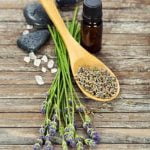Aromatherapy rollons are a convenient and effective way to enjoy the therapeutic benefits of essential oils on the go. In this article, we will explore the world of aromatherapy rollons, their benefits, and various ways they can be used to enhance your well-being. If you’ve ever wondered how to make aromatherapy rollons at home, this comprehensive guide will provide you with everything you need to know to get started.
Aromatherapy has been used for centuries as a natural remedy for various ailments, promoting relaxation, improved mood, and overall wellness. Aromatherapy rollons offer a portable and easy-to-use method of experiencing these benefits throughout the day. Whether you are looking to reduce stress, improve focus, or alleviate headaches, there is an aromatherapy rollon blend that can help.
In the following sections, we will discuss the essential ingredients and equipment needed to create your own aromatherapy rollons, as well as how to choose the right essential oils and create custom blends suited for your individual needs. Additionally, we will cover important safety precautions when working with essential oils and provide creative packaging ideas for your homemade aromatherapy creations. So, let’s dive into the world of aromatherapy rollons and discover how to make them at home.
Getting Started
When it comes to essential oils, it’s important to choose high-quality, pure essential oils for the best therapeutic benefits. Some popular choices for aromatherapy rollons include lavender for relaxation, peppermint for headaches, eucalyptus for respiratory support, and tea tree for skincare. Additionally, you can create custom blends by combining different essential oils to achieve specific scents and therapeutic effects.
Next, you’ll need to select a base oil or carrier oil that complements the chosen essential oil(s). Common carrier oils include jojoba oil, sweet almond oil, coconut oil, and grapeseed oil. Each carrier oil has its own unique properties and benefits for the skin. Finally, you’ll need rollerball bottles that are specifically designed for holding essential oil blends. These bottles typically have a stainless steel or glass rollerball top that allows easy application of the aromatherapy blend.
In addition to these ingredients, you’ll need some basic equipment such as measuring spoons or a small kitchen scale for precise measurements, a funnel for easily transferring liquids into the rollerball bottles, and labels for properly identifying your homemade aromatherapy rollons. With these essential ingredients and equipment in hand, you’ll be well-prepared to start creating your own personalized aromatherapy rollons at home.
| Ingredients | Equipment |
|---|---|
| Essential Oils | Measuring Spoons/Scale |
| Base Oils/Carriers | Funnel |
| Rollerball Bottles | Labels |
Choosing the Right Essential Oils
When making aromatherapy rollons, choosing the right essential oils is crucial to creating blends that offer therapeutic benefits and suit individual preferences. Understanding the properties of different essential oils and how they can be combined to create custom blends is key to maximizing the effectiveness of aromatherapy rollons. Here is a guide on how to select the right essential oils and create custom blends for your homemade aromatherapy rollons:
- Research Essential Oils: Start by researching the therapeutic properties of various essential oils. Consider factors such as their aroma, potential benefits (e.g. relaxation, focus, immune support), and any associated precautions or contraindications.
- Create Custom Blends: Once you have a good understanding of different essential oils, experiment with creating custom blends based on your specific needs or desired effects. For example, you may combine lavender and chamomile for relaxation, or peppermint and eucalyptus for respiratory support.
- Evaluate Scent Combinations: When selecting essential oils for your aromatherapy rollons, consider how different scents complement each other. Some combinations may create a balanced aroma that is both pleasing and beneficial, while others might clash or overpower each other.
By taking the time to carefully choose your essential oils and experimenting with custom blends, you can maximize the effectiveness of your aromatherapy rollons while tailoring them to your personal preferences and needs.
Next steps in this process include learning about base oils and carriers that can be used as well as following safety precautions when working with essential oils.
Base Oils and Carriers
When making aromatherapy rollons, it’s essential to understand the role of base oils and carriers in the blend. These oils not only dilute the potency of essential oils but also provide their own therapeutic benefits. In this section, we will explore the different base oils and carriers commonly used in aromatherapy rollons and their specific benefits.
Choosing the Right Base Oils
Base oils serve as the foundation for aromatherapy rollons, providing a medium for diluting essential oils while nourishing the skin. Some popular base oils include sweet almond oil, jojoba oil, grapeseed oil, and coconut oil.
Each base oil has its own unique properties and benefits, such as moisturizing, anti-inflammatory, or antioxidant properties. When choosing a base oil for your aromatherapy rollon, consider the skin type of the intended user and any specific therapeutic properties you want to incorporate into the blend.
Understanding Carrier Oils
Carrier oils are often used in conjunction with base oils to further dilute essential oils and improve their absorption into the skin. Common carrier oils include fractionated coconut oil, apricot kernel oil, avocado oil, and hemp seed oil.
These carrier oils are lighter in texture compared to base oils and help “carry” essential oils onto the skin without altering their therapeutic properties. It’s important to select a carrier oil based on its compatibility with the chosen essential oils and its desired skincare benefits.
The Benefits of Different Base Oils and Carriers
Each base oil and carrier brings its own set of benefits to an aromatherapy rollon. For example, jojoba oil is known for its long shelf life and similarity to the skin’s natural sebum, making it an excellent choice for facial blends. On the other hand, fractionated coconut oil is light-weight and non-greasy, ideal for massage or body rollons. By understanding these characteristics, you can tailor your blend based on skin type, intended use, or specific therapeutic goals.
By carefully selecting and understanding how different base oils and carriers can enhance your essential oil blends, you can create personalized aromatherapy rollons that promote both physical and emotional well-being.
Step-by-Step Guide
Aromatherapy rollons are a simple and convenient way to enjoy the therapeutic benefits of essential oils on the go. Making your own aromatherapy rollons allows you to create custom blends tailored to your specific needs and preferences. In this detailed guide, we will walk you through the process of making aromatherapy rollons from start to finish, covering everything from measuring ingredients to blending and bottling.
Gathering Your Ingredients and Equipment
Before you begin making your aromatherapy rollons, it’s important to gather all the necessary ingredients and equipment. You will need a selection of essential oils, a base oil or carrier oil, rollerball bottles, and a small funnel for easy pouring. It’s also helpful to have measuring spoons or a digital scale for accuracy when measuring your ingredients.
Measuring and Mixing Your Ingredients
Once you have all your ingredients and equipment ready, it’s time to start making your aromatherapy rollons. Begin by selecting the essential oils you want to use for your blend, considering their therapeutic properties and desired effects. Use a dropper or pipette to carefully measure out the desired amount of each essential oil into a clean glass bowl or beaker.
Blending and Bottling Your Aromatherapy Rollons
After you have measured out your essential oils, it’s time to add them to your selected base oil or carrier oil. The typical dilution ratio for aromatherapy rollons is around 2-5% essential oils to carrier oil, depending on the specific intended use. Once you have added the essential oils to the carrier oil, use a stir rod or glass dropper to gently blend the two together.
Finally, carefully transfer the blended mixture into your rollerball bottles using a small funnel for precision pouring. Be sure to cap the bottles tightly after filling them with the aromatic blend.
By following these step-by-step instructions on how to make aromatherapy rollons, you can easily create personalized blends that provide therapeutic benefits and promote overall well-being.
Safety Precautions
When working with essential oils to create aromatherapy rollons, it is important to prioritize safety to avoid any negative reactions or accidents. Here are some important safety tips and precautions to keep in mind:
1. Dilution: Essential oils are highly concentrated and should never be used directly on the skin. Always dilute essential oils with a carrier oil before applying them topically. The recommended dilution ratio is typically 2-3% for adults, which equates to about 12-18 drops of essential oil per ounce of carrier oil.
2. Skin Patch Test: Before using any new essential oil or blend, perform a patch test on a small area of skin to check for any allergic reactions or sensitivities. Wait 24 hours to ensure there is no adverse reaction before using the oil more extensively.
3. Keep Out of Reach of Children and Pets: Essential oils can be toxic if ingested, so it’s crucial to store them out of reach of children and pets. Additionally, always use caution when applying rollons around children or pets, as some oils can be harmful to them in certain concentrations.
4. Photosensitivity: Some essential oils can cause skin sensitivity when exposed to sunlight, leading to irritation or burns. It’s important to research the photosensitivity of each essential oil used and advise users to avoid sun exposure after application.
5. Proper Ventilation: When blending essential oils and creating rollons, ensure that you are working in a well-ventilated area to prevent inhalation of concentrated vapors, which can cause dizziness or respiratory issues.
By following these safety precautions and tips, you can create and use aromatherapy rollons confidently and enjoy their therapeutic benefits without any adverse effects.
Storage and Usage
As you start creating your own aromatherapy rollons, it’s important to consider the best practices for storing and using them to ensure optimal effectiveness and shelf life. Proper storage and usage can help preserve the quality of the essential oils and prevent them from deteriorating over time.
To begin, it’s crucial to store your aromatherapy rollons in a cool, dark place away from direct sunlight and heat. Exposure to light and heat can cause the essential oils to degrade and lose their therapeutic properties. Additionally, keeping them in a dark place helps maintain the integrity of the essential oils.
When it comes to usage, it’s important to apply the aromatherapy rollons on clean skin. This ensures that the essential oils are not contaminated by dirt or other substances that may affect their purity. It’s also recommended to perform a patch test before using any new blend of aromatherapy rollons to check for any allergic reactions or sensitivities.
Furthermore, be mindful of the expiration date of the carrier oil used in your aromatherapy rollons. Different carrier oils have varying shelf lives, so it’s important to keep track of when they were purchased and discard any rollons that have expired base oils. By following these best practices for storage and usage, you can prolong the shelf life of your aromatherapy rollons and maximize their effectiveness.
Creative Packaging Ideas
In conclusion, creating your own aromatherapy rollons can be a fun and rewarding experience. By understanding the benefits of essential oils and the therapeutic properties of different blends, you can customize your rollons to suit your specific needs. With the right ingredients, equipment, and knowledge of safety precautions, you can create personalized aromatherapy rollons at home.
Once you have created your custom aromatherapy rollons, packaging and labeling them in a creative and stylish way adds a special touch. Whether for personal use or gifting to friends and family, presentation can make all the difference. Consider using colored glass bottles, adding decorative labels, or pairing them with other wellness products for a holistic gift package.
With the step-by-step guide provided in this article on how to make aromatherapy rollons, as well as the tips for choosing the right essential oils and base oils, you have all the information you need to get started on this exciting journey. So gather your materials and let your creativity flow as you embark on this aromatic adventure of making your own aromatherapy rollons.
Frequently Asked Questions
How Do You Make Aromatherapy Roll On?
To make an aromatherapy roll on, you will need a rollerball bottle, essential oils, and a carrier oil. Start by adding the essential oils to the rollerball bottle, then fill the rest of the bottle with the carrier oil. Finally, insert the rollerball top and shake well to mix.
What Is the Best Carrier Oil for Rollerballs?
The best carrier oil for rollerballs is one that has little to no scent and is easily absorbed by the skin. Some popular options include fractionated coconut oil, sweet almond oil, jojoba oil, and grapeseed oil. Each of these carrier oils has its own unique properties that can enhance your aromatherapy blend.
What Is the Ratio of Essential Oils to Roll On?
The ratio of essential oils to carrier oil in a roll on is typically around 2-5% depending on the individual’s sensitivity and age. For adults, this usually means around 10-15 drops of essential oils per 10 ml (0.33 oz) of carrier oil. It’s important to dilute essential oils properly to avoid skin irritation or sensitization.

Are you looking for a natural way to improve your health and wellbeing?
If so, aromatherapy may be the answer for you.





